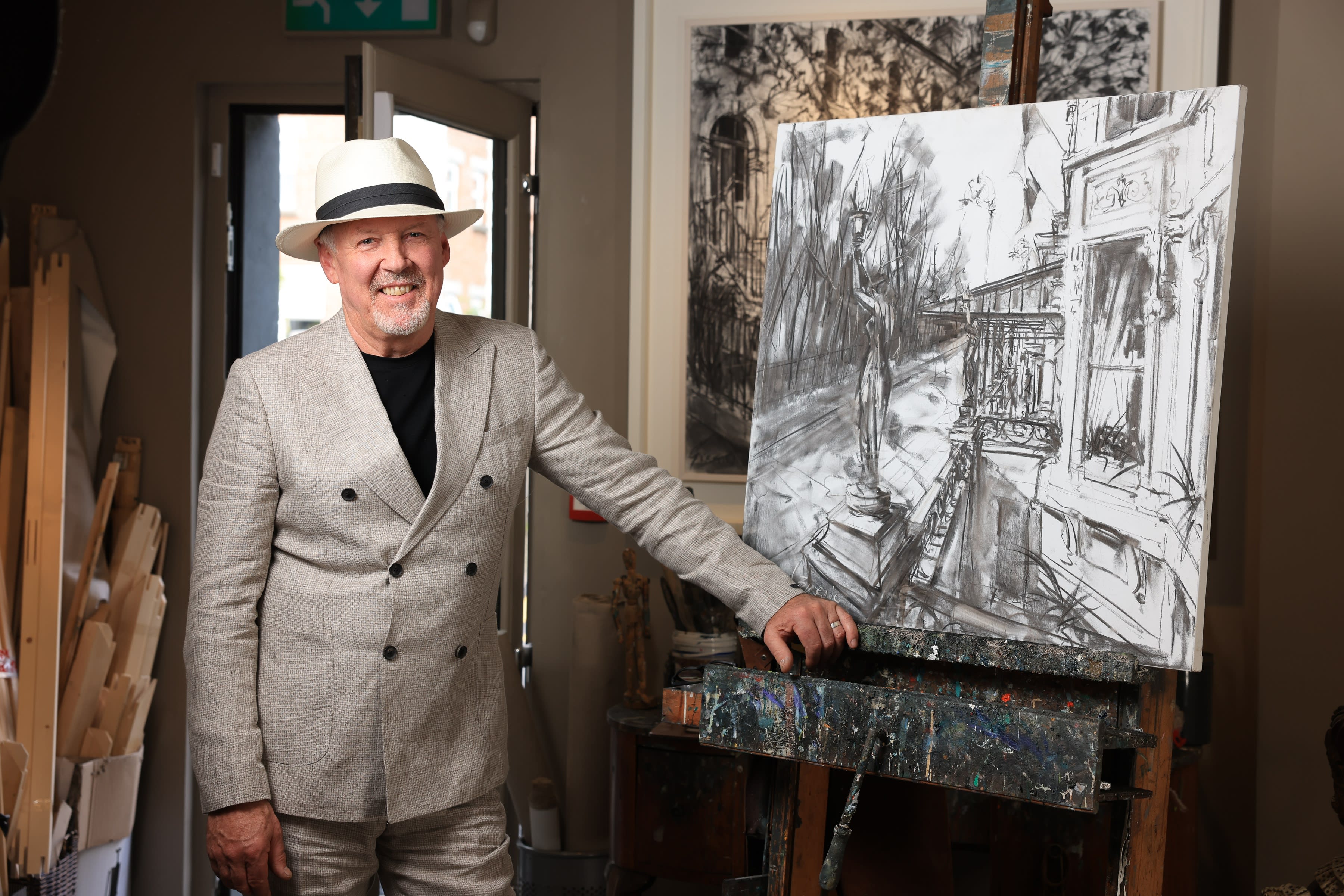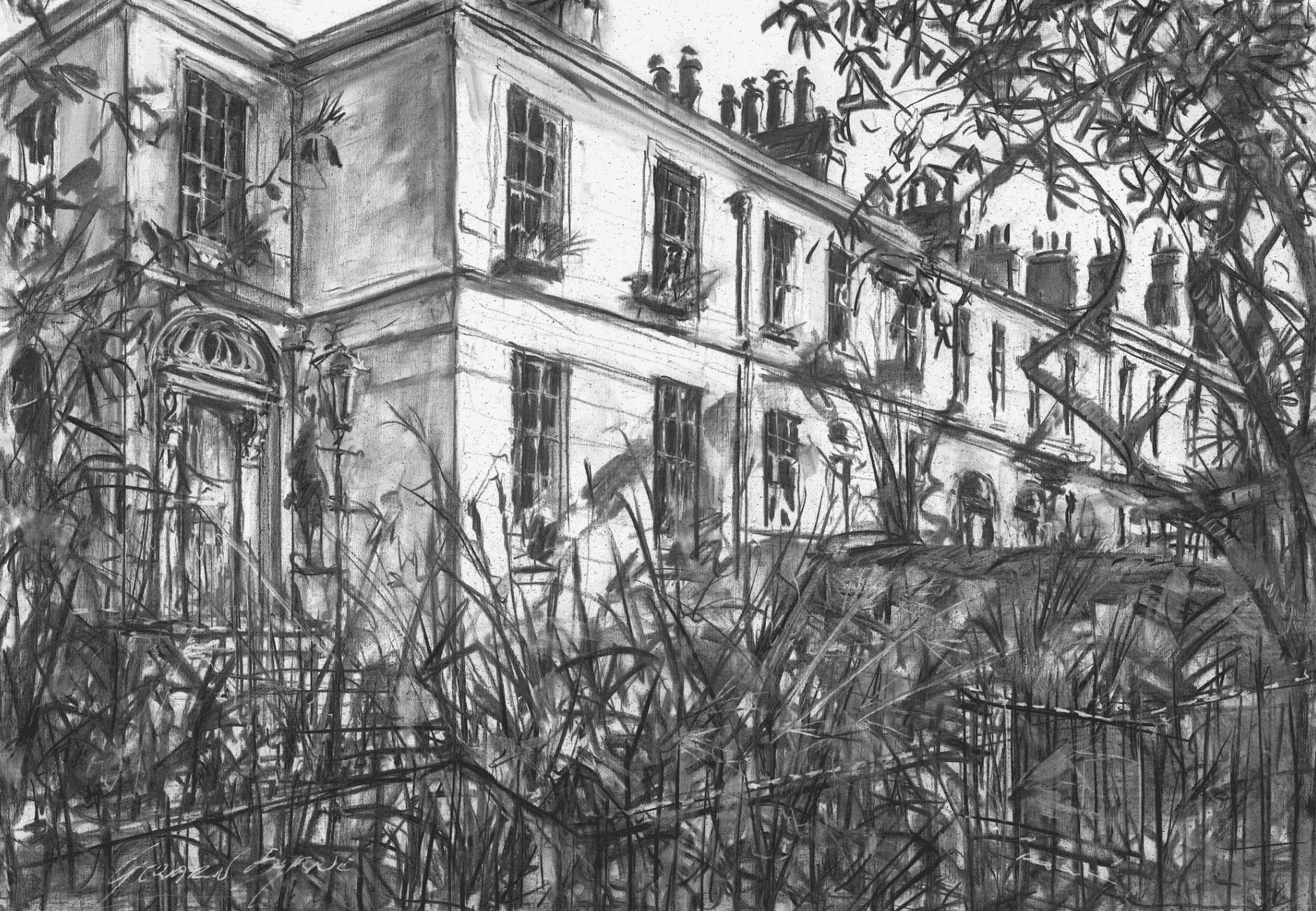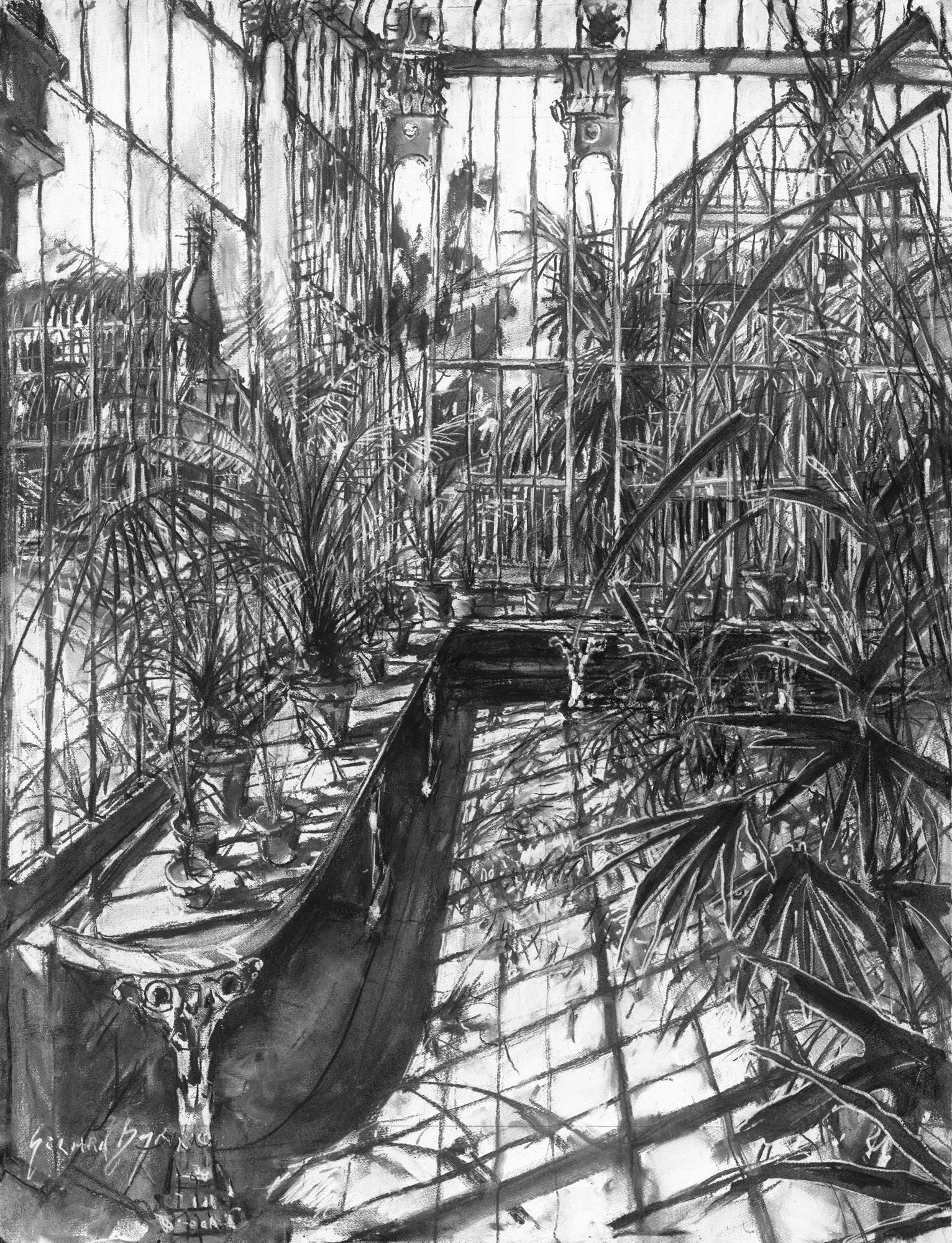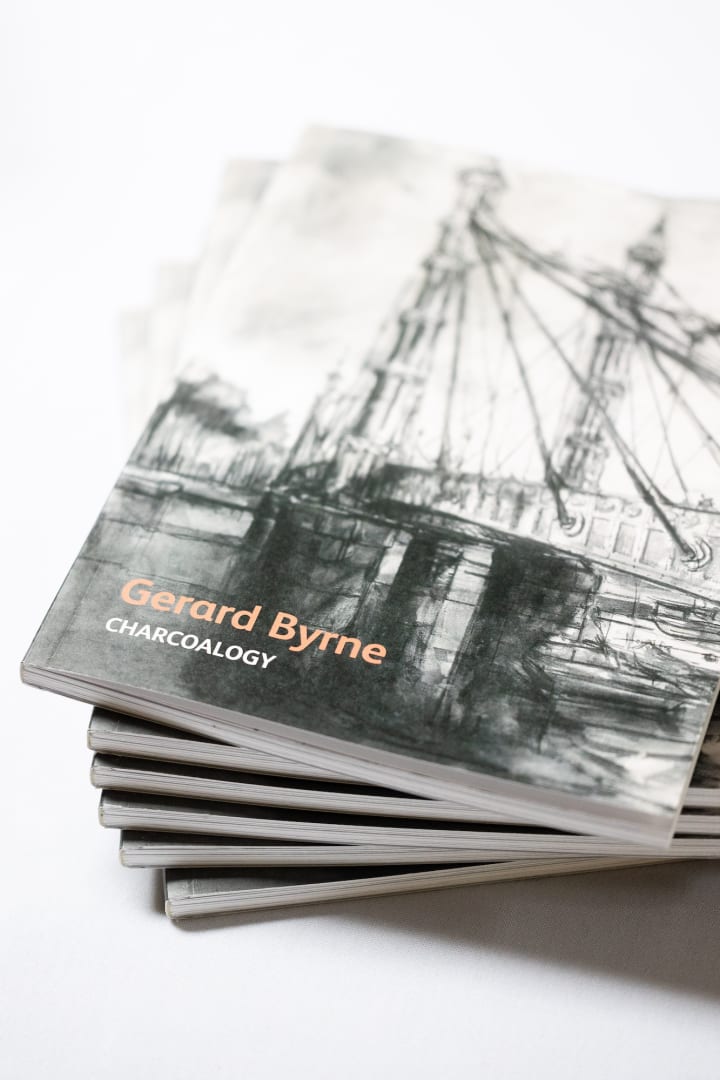Publisher: Gerard Byrne Studio
ISBN: 978-1-9162031-1-2
Dimensions: 25.5 x 19cm
In an ever-changing world, the 'Charcoalogy' collection serves to remind us that artistic endeavour has always been about leaving marks.
Edition: 500 copies
Artworks: 45
Publisher: Gerard Byrne Studio
Artworks: Gerard Byrne
Text: Joanne Drum, Fiona Slevin, Arran Handerson
Design: Ruža Leko, Studio Suss
Editor | Curator: Agata Byrne
Artwork scanning: The Copper House
Print: Impress Printing Works
Cover: ‘Misty Morning’ Albert Bridge
FSC Certified
ISBN: 978 - 1 - 9162031 - 1 - 2
For centuries, drawing was fundamental to the production of art and design, a method of metamorphosis which brought artistic vision to life. Yet, in an era of increasingly digitised art, conceptual drawing and visualisation, draughtsmanship is in danger of becoming the skill of a bygone generation.
Considered a Modern Impressionist, Gerard Byrne's creative process embodies the expertise of his artistic forebears, beginning with a freehand charcoal sketch drawn directly onto the canvas. While known primarily for his finished oil paintings, Byrne sometimes chooses to leave a sketch as it is, in its loose, expressive, monochromatic form.

Once playfully called 'stop paintings', in that they are halfway between creative conception and finished oil painting, these drawings offer not only a glimpse into Byrne's artistic practice, but an insight into his artist's eye.

Believing that beauty is to be found in the everyday, Byrne looks to his surroundings for inspiration, being attracted by the complexity and form of architecture. His drawings pay homage to the architectural heritage of the Georgian, Victorian, Edwardian, and Regency areas so emblematic of Dublin, London, and Brighton and Hove: ornate mouldings, bay windows, elaborate, arched doorways and gable-end chimneys.

In an ever-changing world, the 'Charcoalogy' collection serves to remind us that artistic endeavour has always been about leaving marks. The architectural heritage highlighted in these works resulted from the vision and foresight of draughtsmen, designers, and planners. Its preservation and celebration are crucial to our understanding of the past. Byrne's drawings acknowledge those artists and mark makers who came before him - both in execution and representation - and will remain to be as appreciated in the future as much as the past structures they so expertly and beautifully portray.
